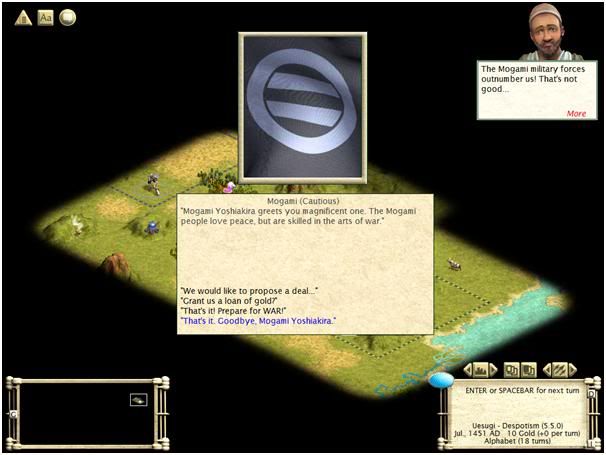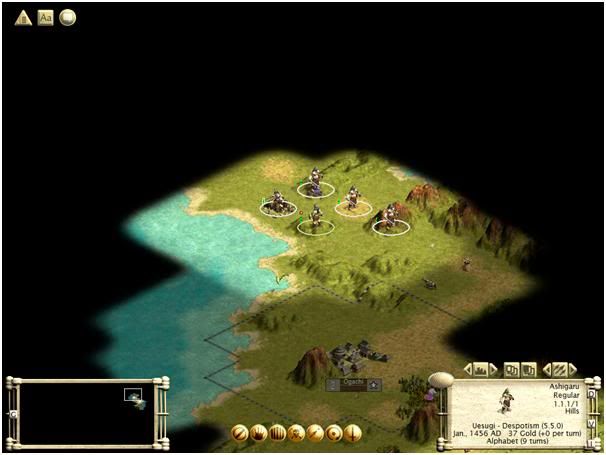Then, after the first days, Kenshin ordered a new city to be founded, to the south, on the coast and it was to live harvesting the fish and dyes of the area. It would grow to be a valuable asset to Kenshin.
However, on their way they had been sent, but Kenshin heard news that his Ashigaru to the north had engaged some more hostile Ainu. Kenshin knew this was a source of gold, so he did not stop them. After all, what God of War stops men going to war?
The new city was founded, and Kenshin visited it in person. In His infinite wisdom, he named it Kakuda, the City in the River.
Word had also been received from his Ashigaru to the north once more. The hostile Ainu had grouped together into a new clan called the Date. They harboured no ambition to rule the entirety of Japan, only to exist and to thrive. Kenshin had no desire to allow them to do so.
To the northwest, in the next spot Kenshin wished to build upon, were a small roaming clan of Ainu. Kenshin was not surprised; the other Gods could be fickle in where their people lived, and these had been allowed to live on a Mountain. Kenshin wished for his troops to move into the small villages outside the main encampment, and to gauge their reaction.
This was a mistake. Although small villages such as these had taught Kenshin the art of making clay pots when entered in the east, these villagers took up arms against him. He was now outnumbered and he was the last defender of Sendai. However, the villagers obviously knew not of Kenshin's golden beacon of hope, as they remained exactly where they were.
They were cut down, and the second village wisely chose not to fight. Instead, they gave up their mystics as prisoners; Kenshin ordered them to spread this mysticism about the empire of the Uesugi.
However, Kenshin was about to get a shock visit- from one he had thought dead and buried long, long, ago.
Nemesis....

![Party [party] [party]](/images/smilies/partytime.gif)






















